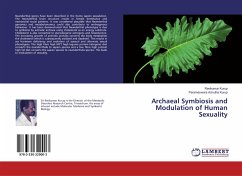Human metabolism and climate change can modulate human sexuality. Neanderthal genes have been described in the homo sapien population. The Neanderthal brain has a prominent cerebellar cortex and small prefrontal cortex. This results in defective vocalization, symbolic speech, impulsive behaviour, obsessive traits, intuition and extrasensory perception. The Neanderthal brain structure results in female dominance and matriarchal social patterns. It was considered plausible that Neanderthal genomics and metabolonomics could also contribute to androgynous behaviour. It has been demonstrated that Neanderthal phenotype is due to symbiosis by actinidic archaea using cholesterol as an energy substrate. Cholesterol is also converted to steroidogenic estrogens and testosterone. The increasing growth of actinidic archaea converts the body metabolites the cholesterol which is subsequently oxidized and depleted. Cholesterol is also converted by actinidic archaea to endogenous digoxin. Digoxinproduces sodium potassium ATPase inhibition and increased in intracellular calcium inducing nitric oxide synthase & heme oxygenase generating gasotransmitters important in autonomic function.
Bitte wählen Sie Ihr Anliegen aus.
Rechnungen
Retourenschein anfordern
Bestellstatus
Storno








